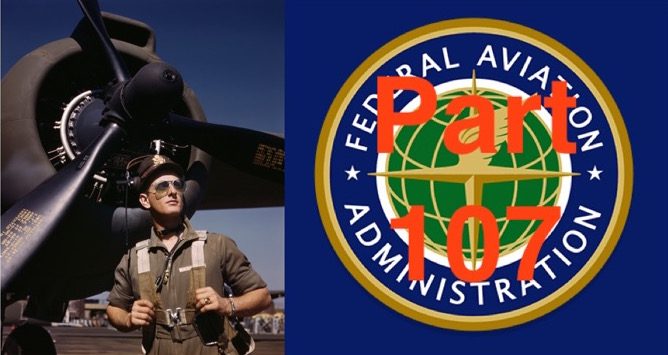 The release of new regulations yesterday has led to many questions about the FAA’s Part 107 training plan for commercial drone operators, many of whom already have a pilot’s license or a Section 333 Exemption. The FAA has now published information about their commercial drone operation course designed for Part 61 pilot certificate holders.
The release of new regulations yesterday has led to many questions about the FAA’s Part 107 training plan for commercial drone operators, many of whom already have a pilot’s license or a Section 333 Exemption. The FAA has now published information about their commercial drone operation course designed for Part 61 pilot certificate holders.
The “Part 107 for sUAS” online course is designed to provide pilots – sport pilot, recreational pilot, private pilot, commercial pilot, and air transport pilot, but not student pilots – with an easy path to commercial drone certification. The two hour online course culminates in an exam. When the exam is passed, a “Part 107 Remote Pilot Certificate with Small Unmanned Aircraft System (sUAS) Rating” will be issued.
Saying that “As a certificated pilot, much of what you already know about manned aircraft applies to the operation of small unmanned aircraft,” the Part 107 training focuses on drone specific issues which range from ensuring that pilots understand the limitations to a Part 107 certification to maintenance and crew management recommendations:
Course Content and Objectives
When you complete this course, you will be able to identify:Requirements to obtain a part 107 remote pilot certificate with a small unmanned aircraft system (sUAS) rating
Characteristics of small unmanned aircraft systems (sUAS) as stipulated in part 107
Exclusions from the requirements in part 107
Requirements for sUAS registration, markings, and condition
Possible supporting crew roles in sUAS operations
Best practices for crew management
Recommended maintenance procedures for sUAS
Inspection requirements to verify that the sUAS is in condition for safe operation
Restrictions and procedures for safe loading of sUAS
Procedures for evaluating performance during UAS operations
Effects of weather on sUAS operations
Operational requirements and limitations for sUAS
Procedures for requesting a waiver for eligible requirements in part 107
Abnormal and emergencies situations that may arise during sUAS operations
Requirements for reporting accidents resulting from sUAS operations
The course requires that the pilot have an account on FAASafety.gov, where the class is located. The fast-tracking of pilots for commercial certification should provide some solace for businesses who feel that their efforts in obtaining a Section 333 Exemption certificate were wasted – while details are still unclear on the exact process for non-pilots, Part 107 does state that the certification for non-Part 61 holders will not be limited to a 2-hour online course.
Source link
 Unmanned Aerial Vehicle The latest drone news
Unmanned Aerial Vehicle The latest drone news



